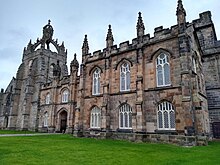
Aberdeen is a city in North East Scotland, and is the third most populous Scottish city. Aberdeen is one of Scotland's 32 local government council areas, and has a 2020 population estimate of 198,590 for the city, making it the United Kingdom's 39th most populous built-up area, and 227,430 for the wider council area including outlying localities. The city is 93 mi (150 km) northeast of Edinburgh and 398 mi (641 km) north of London, and is the northernmost major city in the United Kingdom. Aberdeen has a long, sandy coastline and features an oceanic climate, with cool summers and mild, rainy winters.

New College is one of the constituent colleges of the University of Oxford in the United Kingdom. Founded in 1379 by William of Wykeham in conjunction with Winchester College as its feeder school, New College was one of the first colleges in the university to admit and tutor undergraduate students.
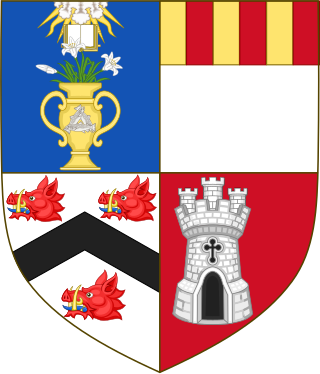
The University of Aberdeen is a public research university in Aberdeen, Scotland. It was founded in 1495 when William Elphinstone, Bishop of Aberdeen and Chancellor of Scotland, petitioned Pope Alexander VI on behalf of James IV, King of Scots to establish King's College, making it one of Scotland's four ancient universities and the fifth-oldest university in the English-speaking world. Along with the universities of St Andrews, Glasgow, and Edinburgh, the university was part of the Scottish Enlightenment during the 18th century.

Hector Boece, known in Latin as Hector Boecius or Boethius, was a Scottish philosopher and historian, and the first Principal of King's College in Aberdeen, a predecessor of the University of Aberdeen.

William Elphinstone was a Scottish statesman, Bishop of Aberdeen and founder of the University of Aberdeen.

The ancient universities of Scotland are medieval and renaissance universities that continue to exist in the present day. Together, the four universities are the oldest universities in continuous operation in the English-speaking world after the universities of Oxford and Cambridge. The majority of the ancient universities of the British Isles are located within Scotland, and have a number of distinctive features in common, being governed by a series of measures laid down in the Universities (Scotland) Acts 1858–1966. The Universities (Scotland) Act 1966 uses the term 'older universities' to refer to St Andrews, Glasgow, Aberdeen and Edinburgh. The four universities are generally regarded as the country's most selective, eminent and well-ranked universities.

Dunnottar Castle is a ruined medieval fortress located upon a rocky headland on the north-eastern coast of Scotland, about 2 miles south of Stonehaven. The surviving buildings are largely of the 15th and 16th centuries, but the site is believed to have been fortified in the Early Middle Ages. Dunnottar has played a prominent role in the history of Scotland through to the 18th-century Jacobite risings because of its strategic location and defensive strength.

Marischal College is a large granite building on Broad Street in the centre of Aberdeen in north-east Scotland, and since 2011 has acted as the headquarters of Aberdeen City Council. However, the building was constructed for and is on long-term lease from the University of Aberdeen, which still uses parts of the building to store its museum collections. Today, it provides corporate office space and public access to council services, adjacent to the Town House, the city's historic seat of local government. Many Aberdonians consider Marischal College to be an icon of the "Granite City" and to symbolise the zenith of Aberdeen's granite-working industry.
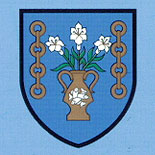
Old Aberdeen is part of Aberdeen in Scotland. Old Aberdeen was originally a separate burgh, which was erected into a burgh of barony on 26 December 1489. It was incorporated into adjacent Aberdeen by Act of Parliament in 1891. It retains the status of a community council area.

Marischal Museum was a museum in Aberdeen, Scotland, specialising in anthropology and artifacts from cultures around the world. The museum was a part of the University of Aberdeen, situated at Marischal College, a grand neo-gothic building said to be the second-largest granite building in the world, displaying collections owned by the university. The museum is closed to the public, but now operates as the University of Aberdeen's museum collections centre.
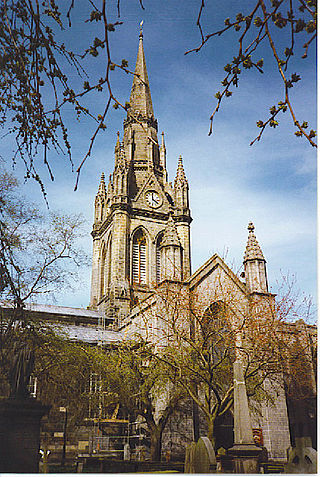
The Kirk of St Nicholas is a historic church located in the city centre of Aberdeen, Scotland. Up until the dissolution of the congregation on 31 December 2020, it was known as the "Kirk of St Nicholas Uniting". It is also known as "The Mither Kirk" of the city. As of 1 January 2021, the building falls under the care and maintenance of the General Trustees of the Church of Scotland.

The Aberdeen Breviary is a 16th-century Scottish Catholic breviary. It was the first full-length book to be printed in Edinburgh, and in Scotland.

Education in Aberdeen, Scotland has a strong tradition with two Universities and Scotland's largest further education college.
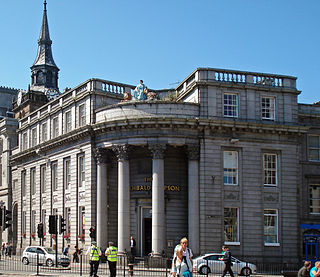
The architecture of Aberdeen, Scotland, is known for the use of granite as the principal construction material. The stone, which has been quarried in and around the city, has given Aberdeen the epithet The Granite City, or more romantically, and less commonly used, the Silver City, after the mica in the stone which sparkles in the sun.

Elphinstone Hall is a large hall belonging to the University of Aberdeen, located at their King's College campus in Old Aberdeen. It is a 20th-century building which replaced the "Common Hall" and is named after Bishop William Elphinstone, the founder of the University. An arcade dominates the front of the building, behind which lie a reception area and then the large, wood-panelled hall with hammerbeam roof. Portraits of founding fathers of the university and other key figures from its history line the walls. A related suite of luxurious rooms called the Linklater Rooms run along the arcade, named after writer Eric Linklater, a graduate of the university. The complex includes catering facilities as well as cloakroom facilities. In front of the hall is a large lawn, which is popular with students and staff of the university in summer. In winter, the university places a large Christmas tree on this lawn. The hall is currently the venue for all University of Aberdeen graduation ceremonies.
Alexander Marshall MacKenzie was a Scottish architect responsible for prestigious projects including the headquarters of the Isle of Man Banking Company in Douglas, and Australia House and the Waldorf Hotel in London.

The University of Aberdeen School of Law is the law school of University of Aberdeen, located in Aberdeen, Scotland. Established in 1495, it is consistently ranked among the top 10 law schools in the United Kingdom.

The University of Glasgow Memorial Chapel is a chapel at the University of Glasgow, Scotland. It was consecrated on 4 October 1929, and is dedicated to the memory of the former students and staff of the university who died in the First World War. It is located in the West Quadrangle of the Main Building of the university, and was designed by John James Burnet. The chapel is protected as a category A listed building.

King's Museum was a small university museum operated by the University of Aberdeen and located in the Old Town House in Old Aberdeen, Scotland.

Canon Alexander Galloway was a 16th-century cleric from Aberdeen in Scotland. He was not only a Canon of St Machar's Cathedral, he was a Royal Notary and Diocesan Clerk for James IV and James V of Scotland; vicar of the parishes of Fordyce, Bothelny and Kinkell (1516-1552); five times Rector of King's College – University of Aberdeen; Master of Works on the Bridge of Dee in Aberdeen and for Greyfriars Church in Aberdeen; and Chancellor of the Diocese of Aberdeen. According to Steven Holmes, he was one of the most notable liturgists of his time, designing many fine examples of Sacrament Houses across the North-East of Scotland. He was a friend of and adviser to Hector Boece, the first Principal of the University of Aberdeen, as well as Bishop Elphinstone, Chancellor of Scotland and Gavin Dunbar. He was an avid anti-Reformationist being a friend of Jacobus Latomus and Erasmus and clerics in the Old University of Leuven. Along with Gavin Dunbar, Galloway designed and had built the western towers of the cathedral and designed the heraldic ceiling, featuring 48 coats of arms in three rows of sixteen. More than anyone else he contributed to the development of the artistry of Scottish lettering. He has a claim to be what some might call "a Renaissance Man".













